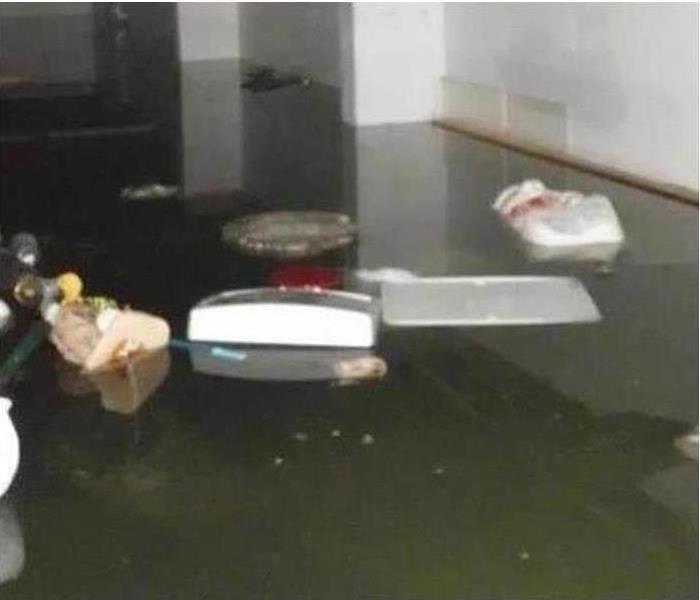Understanding the Different Types of Water
4/21/2022 (Permalink)
Understanding the Different Types of Water
IICRC Standard and Reference Guide for Professional Water Damage Restoration sets three categories of water that cause damage in buildings. They are summarized as follows:
Category 1 Water - Refers to a source of water that does not pose substantial threat to humans and classified as "Clean Water". Category 1 water may become contaminated if it mixes with soils or floor coverings, building assemblies, etc... Time and temperature can promote growth and amplification of microorganisms in water, which can cause Category 1 water to degrade.
Examples of category 1 water are: a broken water supply line (including the toilet), and tub or sink overflows.
Category 2 Water - Refers to a source of water that contains a significant degree of chemical, biological or physical contaminants. These contaminants can cause discomfort or sickness when exposed or consumed. This water type carries micro organisms and is nicknamed "Gray water."
Examples of category 2 water are: toilet bowls with urine (no feces), sump pump failures, dishwasher water discharge, and washing machine water discharge.
Category 3 Water - Nicknamed "Black Water" and are grossly unsanitary. These indoor water sources contain unsanitary agents, harmful bacteria and fungi, causing severe discomfort or sickness.
Examples of type 3 water are: water sources from sewage, seawater, stream or river water, ground surface water or standing water.
Category 2 Water that is not promptly removed and remained stagnant may be reclassified as Category 3 Water. Toilet back-ups that originate from beyond the toilet trap is considered black water contamination regardless of visible content or color.
Knowing the classification of your water in your Mentor home may help you understand personal safety concerns and the necessary material and debris removal anticipated.
Handling Water Damage from the Different Types of Water
When your Mentor, OH home or business suffers a water damage, understanding what type of water you are dealing with is critical to ensuring proper cleanup. When you have a water damage, don't leave your property to chance. Call SERVPRO of Mentor. Consider taking the following precautions to help minimize damage or prevent further damage while waiting for help to arrive.
Damage from Clean Water:
- Shut off the water source if possible or contact a qualified professional to do so.
- Turn off circuit breakers for wet areas of the building if access to the power distribution panel is safe from potential electrical shock. Do not enter rooms with standing water, as electrical shock hazards may exist.
- Remove as much excess water as possible by mopping and blotting. Wipe excess water from wood furniture after removing lamps and tabletop items.
- Remove and pop up wet upholstery cushions to allow more even drying.
- Move any painting, art objects, computers, documents, and other valuable items that may be sensitive to moisture to a safe place.
- Do not leave books, newspapers, magazines, or other colored items on wet carpets or floors as they may cause staining.
- Do not use your household vacuum cleaners to remove water as there is potential for electrical shock or causing damage to the vacuum cleaner.
- Do not turn on ceiling fixtures if ceiling is wet; do not enter rooms where ceilings are sagging from retained water.
Damage from Contaminated Water:
- Avoid all contact with sewage and items contaminated by sewage. Wash your hands thoroughly if you come in contact with contaminated items.
- Do not walk through contaminated areas, as you could spread damage to unaffected areas.
- Do not turn on HVAC system if there is a possibility of spreading contaminated air.
- Do not use household fans to dry the structure; airflow could spread contaminants.
- Discard any food and/or products for personal hygiene and cleanliness if exposed to the contaminated areas.
If you experience water damage no matter the category, be sure to call SERVPRO of Mentor to handle your water mitigation needs. We'll help make it "like it never even happened."

 24/7 Emergency Service
24/7 Emergency Service
